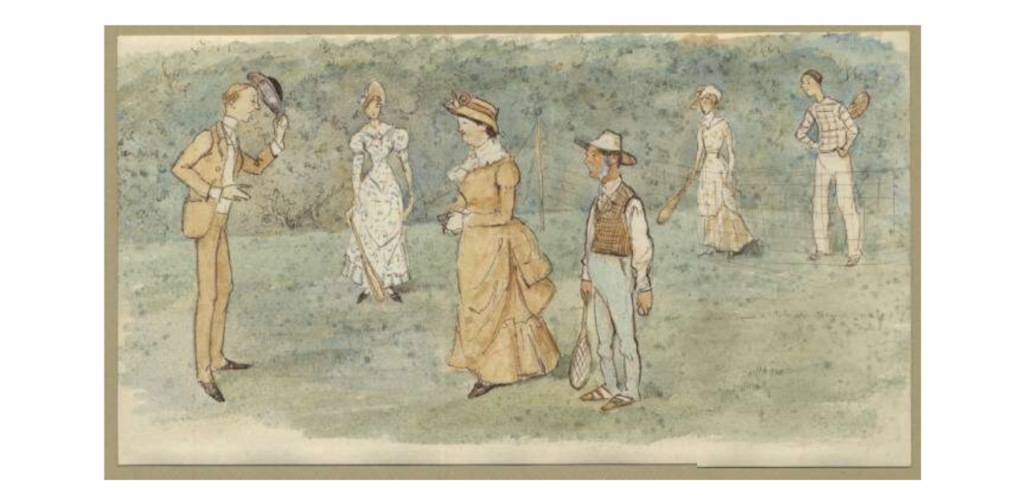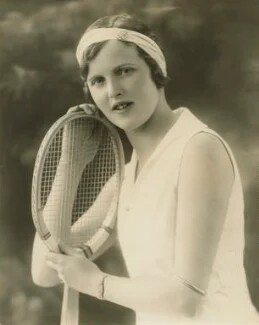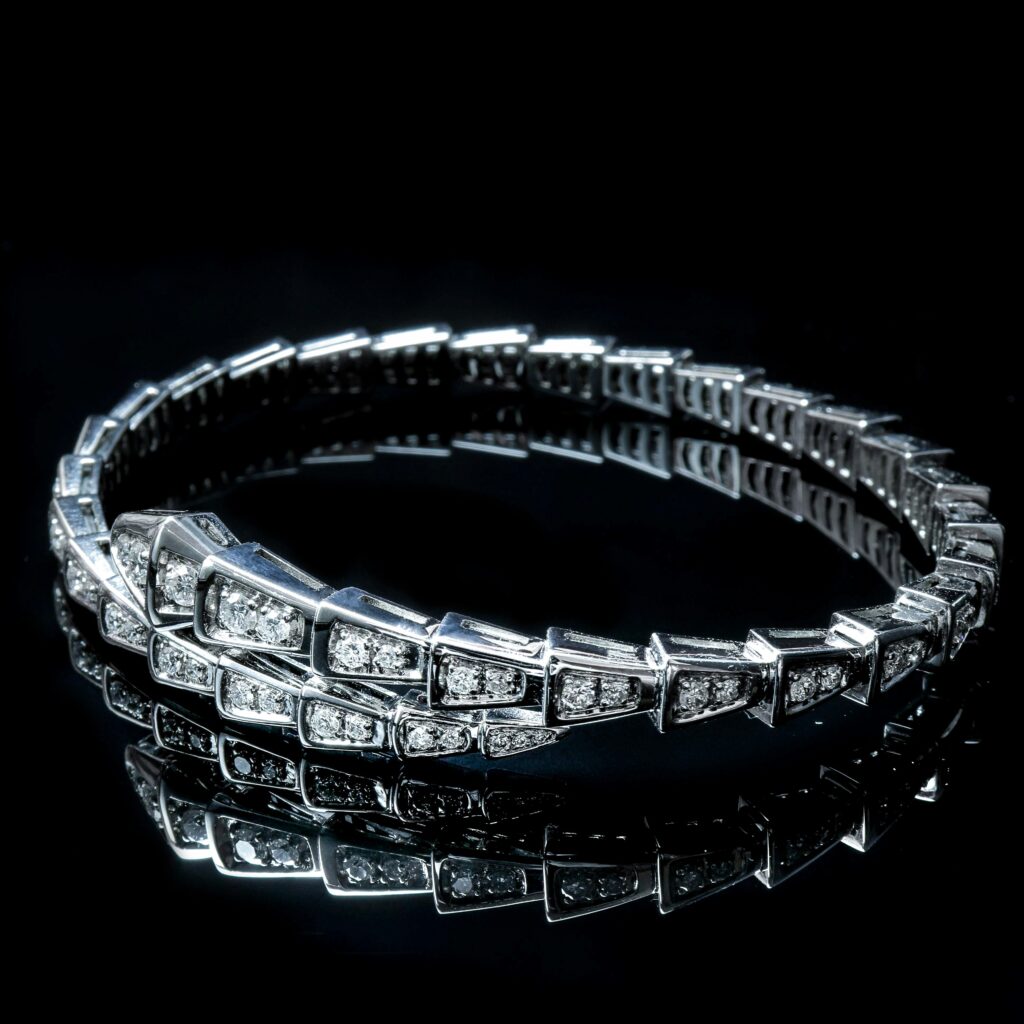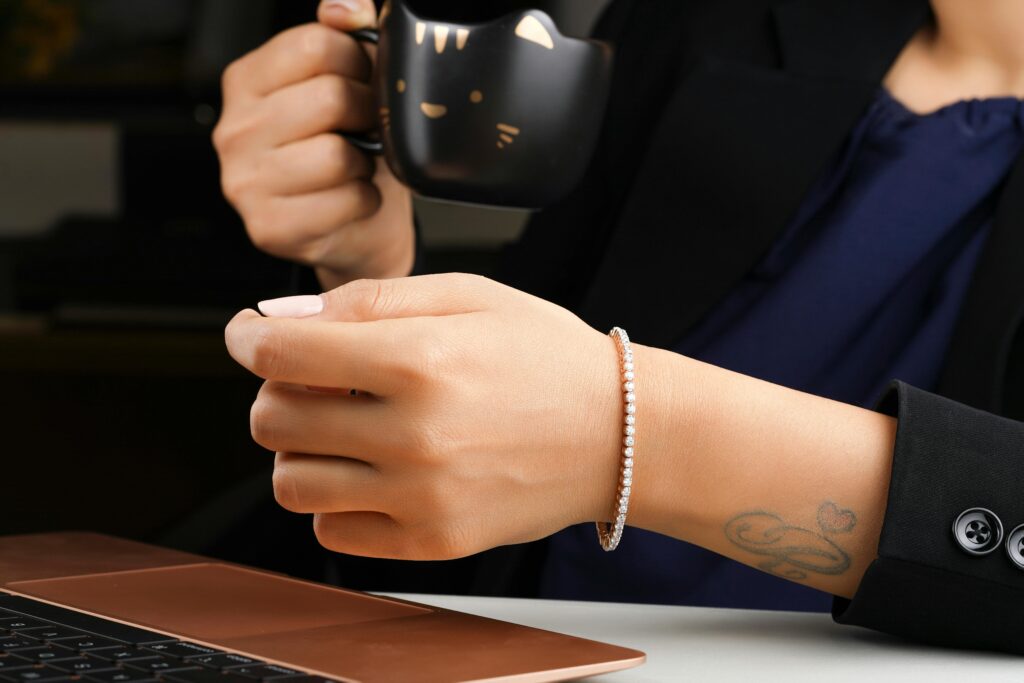By Rachel Church, BAJ Associate Lecturer: Contextualising Jewellery Practice
The new game of lawn tennis, developed from indoor real tennis, became hugely popular in the late nineteenth century. Tennis parties allowed young men and women to play together, encouraging flirtations and courtships. Tennis, like the equally popular cycling, also gave middle-class women a rare opportunity to be physically active.
Tennis was the inspiration for new fashions. Early women tennis players wore impractical long dresses with corsets which made it difficult to move around the court. By the 1920s, women wore short, sleeveless and softly coloured tennis outfits, inspired by the low-waisted styles of day wear. Style and sport went hand in hand, especially for amateur players.


Players like Joan Cowell O’Meara accessorised their sleeveless tennis dresses with the fashionable bracelets and watches of the 1920s and 30s. In a photograph by Bassano from the 1930s, she is wearing a diamond bracelet-watch with a gold bangle above her elbow.
The elegant line bracelet, now recognised as a tennis bracelet, really came into fashion in the early twentieth century. Bracelets were very much in vogue – an advert for ‘bracelets for bare arms’ from the jewellers J. Wakefield in 1923 told their customers that:
‘When fashion dictates the short sleeve, it is a good opportunity to display a dainty bracelet’.
Simple line bracelets, set with gemstones in light platinum settings, were the perfect jewel to match a modern short sleeved dress, especially when worn in multiples. According to the Jeweler’s Circular of 1928, ‘there is practically no limit to the number of bracelets that now lend distinction to the fashionable forearm. A quarter of a yard of them has been given as the proper measure’.
The link between line bracelets and tennis was cemented in 1978 when Chris Evert’s famous diamond bracelet fell off during a match, halting play while it was retrieved. When asked what had caused the delay, she explained, ‘it was my tennis bracelet’, giving the jewel its new name.
The classic line bracelet was now repurposed as a stylish tennis bracelet and sales took off, giving it a popularity which lasts to this day. In 2022, Evert collaborated on a modern line of tennis bracelets with jeweller Monica Rich Kosann, saying that “My hope is that the tennis bracelets we created together become a woman’s daily armor in every facet of her life to conquer the day ahead”.
Nowadays, the tennis bracelet can be part of every woman’s jewellery wardrobe – dressed up for glamour or part of a stylish, sporty outfit.



The classic elegance of silver or platinum set with white diamonds can be enlivened by different cuts of stones. This bracelet is shaped like a stylised snake.
Diamonds are the traditional choice, but why not reimagine them with colourful stones as the bright new tennis bracelets of the 2020s?

Study at BAJ
Be the first to hear about competitions and giveaways, events, special offers and exclusive discounts, new course dates, and other updates from BAJ.